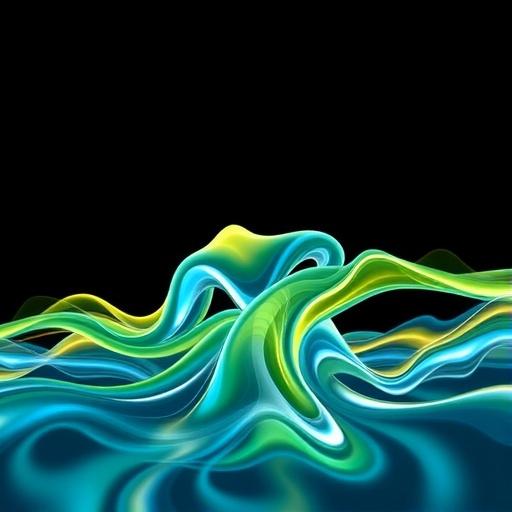In less than a month, thousands of scientists from around the globe will converge at the 78th annual meeting of the American Physical Society’s Division of Fluid Dynamics. Taking place exclusively in person at the prestigious George R. Brown Convention Center in Houston from November 23rd to 25th, this landmark event promises to be an unparalleled showcase of cutting-edge research in fluid physics. The conference draws the world’s foremost experts who are pushing the boundaries of our understanding of fluid behavior in natural and engineered systems.
This year’s meeting features a remarkable scientific program comprising nearly 300 sessions and thousands of presentations. Researchers will reveal their latest insights into a plethora of topics ranging from aerodynamics and turbulence to biofluids, wind energy, and climate dynamics. Attendees will be immersed in a diverse array of discussions exploring how fluid flows impact everything from weather systems to energy technologies. The depth and breadth of the program reflect the central role that fluid dynamics plays in both fundamental science and transformative applications.
One highlight of the event is the vibrant Gallery of Fluid Motion competition and exhibition. This annual visual arts contest captures the astonishing beauty and complexity inherent in fluid phenomena, illustrating the interplay between science and art. Winners will be celebrated in a ceremony on November 24th at 2:10 p.m. CT. Moreover, a traveling version of this striking exhibit will be displayed at the Nicole Longnecker Gallery and the Houston Museum of Natural Science until January 25th, 2026, offering the public an opportunity to witness mesmerizing fluid behaviors through innovative imaging techniques.
The scientific program boasts presentations that delve into technically sophisticated investigations with real-world relevance. For instance, one session explores the breakup behavior of liquid jets under aerial firefighting conditions, a topic crucial for optimizing fire suppression methods by understanding droplet formation and stability during nozzle deployment. Another talk delves into the acoustic emissions generated during tape peeling, shedding light on fracture mechanics and energy dissipation in adhesive processes at microscopic scales.
Innovative imaging and computational approaches take center stage in talks such as the large-scale volumetric imaging and tracking of natural snowfall. This research employs advanced 3D imaging technology to quantify snowflake trajectories and interactions, revealing the microphysical dynamics of precipitation that influence climate models and hydrology. Complementing experimental methods, machine learning increasingly features in presentations—such as the modeling of residential heat pump performance based on extensive field data—highlighting the fusion of fluid mechanics with artificial intelligence to enhance energy efficiency.
The conference also showcases research on highly interdisciplinary topics. A compelling session on the mechanics of brush calligraphy connects fluid dynamics with the physics of soft materials and artistic motion. Similarly, autonomous drone swarming for three-dimensional mapping of atmospheric particle transport exemplifies the integration of robotics, environmental monitoring, and fluid transport phenomena from micrometer to kilometer scales, promising significant advancements in air quality assessment and climate science.
Robotics and biomimetics come to the fore with presentations like the “Mola Mola Robot,” which mimics fish locomotion to study fluid-structure interactions underlying efficient swimming in aquatic animals. Historical analysis is also represented by the “Motor Mill,” where researchers reconstruct ancient turbine mechanisms using fluid dynamics simulations, bridging past engineering marvels with modern science and technology.
Explorations of fluid mechanics extend to forensic applications as well, with investigations into the fluid dynamics of bloodletting events providing novel methods for crime scene reconstruction. These studies blend fluid mechanics with forensic science to improve accuracy in determining event timelines and physical conditions during violent incidents.
The human dimensions of fluid physics are also celebrated, notably in sessions dedicated to highlighting the contributions of women in fluids. These discussions emphasize diversity, identity, and storytelling within the scientific community, fostering an inclusive environment where varied perspectives drive innovation and discovery.
Advancements in experimental techniques are evident in talks on meniscus profiling of fishing lures using optical diffraction. Such precision measurements inform the optimization of lure design by characterizing fluid interactions at interfaces, impacting both ecological studies and recreational fishing industries.
The collective expertise gathered at the APS Division of Fluid Dynamics meeting heralds a dynamic exchange of ideas, fostering collaborations and inspiring the next generation of fluid scientists. From fundamental physics to applied technologies and interdisciplinary innovations, this meeting encapsulates the vibrancy and critical importance of fluid dynamics research in addressing contemporary challenges across science and society.
Media representatives accredited by APS can register free of charge via the official channels, ensuring broad coverage of this pivotal scientific event. The conference remains a cornerstone for disseminating the latest fluid physics discoveries, reinforcing the field’s status as a cornerstone of physical sciences.
Subject of Research: Fluid dynamics and physics of fluids
Article Title: Not specified
News Publication Date: Not specified
Web References: https://dfd-meeting.aps.org/, https://gfm.aps.org/, https://schedule.aps.org/dfd/2025/schedule/
References: Not provided
Image Credits: Not provided
Keywords: Physics, Fluid dynamics, Aerodynamics, Fluid flow, Fluids, Turbulence, Hydrodynamics




